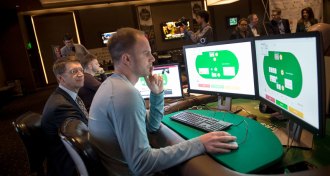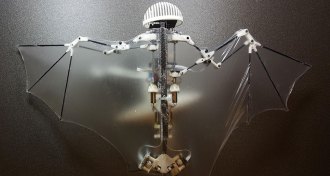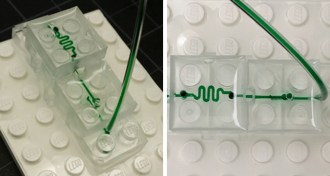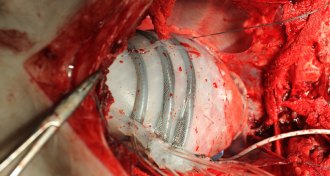Tech
Sign up for our newsletter
We summarize the week's scientific breakthroughs every Thursday.
-
 Tech
TechVirtual reality has a motion sickness problem
Virtual reality games and experiences can make some people sick, and women are more susceptible.
By Betsy Mason -
 Science & Society
Science & SocietyChoosing the right cyberattack response is a complicated game
Public shaming or retaliation aren’t necessarily the best strategies in the world of cyber warfare, an analysis reveals
-
 Computing
ComputingWinning against a computer isn’t in the cards for poker pros
Poker-playing computers beat professional players at heads-up no-limit Texas Hold’em.
-
 Quantum Physics
Quantum PhysicsReaders amazed by Amasia
Quantum spookiness, shifting landmasses and more in reader feedback.
-
 Planetary Science
Planetary ScienceEuropa lander mission takes another step toward reality
NASA is working on a possible lander mission in which the main science goal would be to search for signs of life on Jupiter’s moon Europa.
-
 Astronomy
AstronomyCitizen scientists are providing stunning new views of Jupiter
A camera aboard NASA’s Juno spacecraft is giving citizen scientists a crack at discovering never-before-seen features of Jupiter.
-
 Computing
ComputingSpeech recognition has come a long way in 50 years
Early versions of computer speech recognition relied on word sounds. Now, they add pattern recognition and a lot of statistics.
-
 Materials Science
Materials ScienceGermanium computer chips gain ground on silicon — again
Having pushed silicon to its limit, engineers are turning back to germanium.
-
 Tech
TechBat robot takes wing
Unlike other aerial robots that use whirling rotor blades to fly, the Bat Bot relies on soft, silicone-based wings to glide, swoop and turn.
By Meghan Rosen -
 Tech
TechLegos inspire versatile fluid-filled devices
Tiny devices shuttle fluid around using reconfigurable Lego-like bricks.
-
 Tech
TechHeart-hugging robot does the twist (and squeeze)
A robotic sleeve that slips around the heart mimics the heart’s natural movement, squeezing and twisting to pump blood in pigs. If it works in humans, it could buy time for heart failure patients awaiting a transplant.
By Meghan Rosen -
 Materials Science
Materials ScienceNew ‘smart’ fibers curb fires in lithium-ion batteries
To stifle battery fires, scientists create component with heat-release flame retardant.